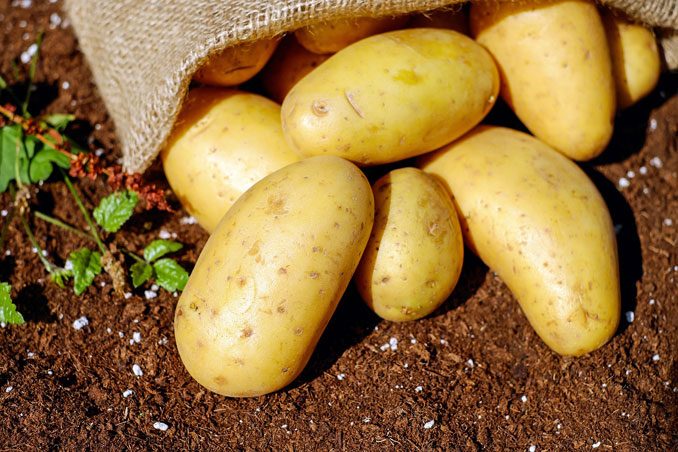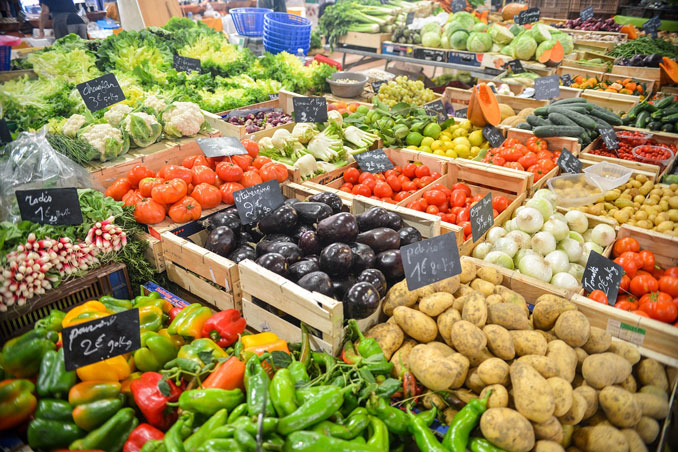
French fries, mashed potatoes, vodka, and more — potato products are veggies are revered for their versatility. However, especially in their raw form, they’re still susceptible to going bad. Just as with any other produce, you should learn how to know when a potato is bad to avoid consuming compromised foods. Potatoes are versatile veggies, but they have a limited shelf life just like any other type of produce. Watch out for these signs that it’s time to toss your taters. Below, are the warning signs that your potatoes are nearing the end of their life span.
Cooked Potatoes
Determining whether cooked potatoes have gone bad can be tricky. Most popular potato types are good for three to four days in the fridge after they’re cooked or up to a year when frozen.
Even with this three- to four-day span in mind, you should always keep an eye for a few obvious indicators that you shouldn’t eat your potatoes. Spoilage can manifest itself through pungent odors and visible mold, but the signs to toss your taters aren’t guaranteed to be this obvious every time. Because harmful bacteria can exist in food without giving itself away through visible markings, consume your cooked potatoes within four days of whipping them up.
Sprouted Spuds
One visual change in potatoes that has likely given you pause in the past is sprouts. Sprouts contain toxic glycoalkaloids, which can severely harm your body. Consuming sprouts can result in the following unfavorable experiences:
Headaches
Vomiting
Diarrhea
These unsightly growths aren’t encouragement to get rid of your whole potato selection, though. Recently sprouted potatoes are still considered safe to eat as long as you snap off the sprouts before cooking.
Spud Suggestion: Glycoalkaloids can reside in areas of the potato that have a greenish tint. To reduce the risk of consumption, cut and toss any green sections of your potatoes.

Fresh Taters
Whether you grow your own potatoes or hand-select them at the grocery store, a grasp on how to know when a potato has gone bad will always come in handy when you’re deciding which are safe to eat. For fresh potatoes, here are a few tips on selecting the best of the bunch:
Opt for raw potatoes that are firm to the touch.
Avoid potatoes that have bruises or any types of blemishes on the skin.
Discard any potatoes that have gone soft or mushy.
Discard any potatoes that emit a musty smell.
Storage
Once you’ve made your selection of raw potatoes, it’s essential to follow proper potato storage guidelines to maximize their shelf life. Without the proper storage elements, your potatoes will become much more vulnerable to rotting, and you’ll likely recognize signs of the rotting sooner than you’d expect.
Optimal storage for potatoes is a cool area of the kitchen, with good ventilation and out of direct sunlight. Basement storage can be ideal. At warmer temperatures, sprout growth and rot is more likely. A kitchen cupboard, pantry or closet is the ideal location for potato storage. The optimal temperature for potato storage is 45°F to 55°F. Storage in a cool, humid (but not damp), and dark location, can prolong useful potato life for months. However, storage in a refrigerator is too cold.
Avoid letting potatoes get wet. If a potato gets wet, cook it immediately, or at least separate it from storage with the other potatoes and use it before the others.
Don’t use plastic bags, such as the bags you get at the grocery store, or sealed containers, which can trap moisture and create a damp environment which will cause potatoes to spoil prematurely.
^^ MOBILE? USE VOICE MIC ^^
facebook …
Please ‘LIKE’ the ‘Arlington Cardinal Page. See all of The Cardinal Facebook fan pages at Arlingtoncardinal.com/about/facebook …
Help fund The Cardinal Arlingtoncardinal.com/sponsor
20240105-1435future
THANKS FOR READING CARDINAL NEWS
